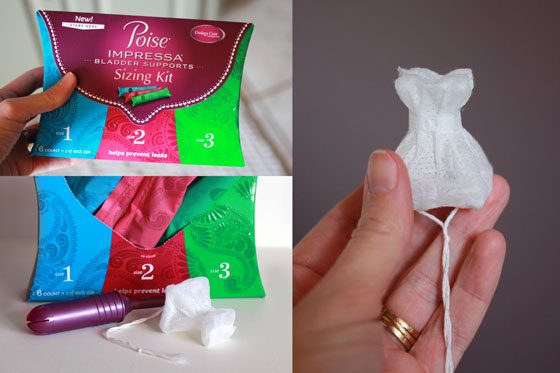There are some things you just don’t talk about in mixed company… unless you’re a mom. Somehow, holding a Mommy Card in that bottomless-pit-of-a-purse enables you to speak freely with any random human about all things related to bodily functions. Admit it, you’ve discussed most of these topics within the safe confines of your Mom circle: poop color, diaper blow outs, poop in the bathtub, bribing someone to poop, overnight diaper leaks, frantic searches for restrooms while shopping, always having a change of clothes in the car… you get the idea. But what happens when it isn’t your kid who’s wetting the bed or peeing his pants, but instead it’s you? Rest assured, you are not alone, and this does not have to be your new normal. 
Urinary Incontinence
If you’re still reading this after all of the allusions to potty mishaps, welcome to the club of “People Who Can No Longer Sneeze Without Clenching Their Legs Together.” It’s a pretty great crowd, and it includes over 35 million women! In case you weren’t aware, urinary incontinence (UI) is fairly common after giving birth, and it doesn’t only affect moms who delivered vaginally. During pregnancy and birth, your pelvic muscles get stretched out, not to mention the fact that they’ve become the sparring partner for a little wannabe MMA fighter for 9 months. In the majority of cases, UI is short-lived, and at most you’ll have to be mindful of your bladder during allergy season when sneezes come more frequently. There are two main types of UI: stress urinary incontinence (SUI), and urge urinary incontinence (UUI). Women with SUI experience small urine leaks due to everyday things like laughing, coughing, sneezing, or running. Those with UUI will experience leaks when they have a sudden urge to urinate, or if they need to rush to the bathroom due to a full bladder. It is also possible for women to experience both types of incontinence… this is known as mixed urinary incontinence (MUI). One in three women experience some form of UI. 
Leak Prevention!
For women who suffer from occasional SUI, the Poise Impressa Bladder Supports may be an option! These tampon-like devices are not absorbent; rather, once inserted, they expand to prevent leaks by gently applying closing pressure to the urethra. Because the Impressa isn’t absorbing leaks, but instead preventing them in the first place, it is safe to use one every day for up to 8 hours at a time! The Impressa is not for women who have UUI or MUI; only women who have sudden leaks caused by SUI should use Impressa. If you have Mixed or Urge incontinence, an absorbency product is your best option.  If you think the Poise Impressa Bladder Supports may work for you, you can download a Poise Impressa coupon for the sizing kit or for a single-size pack. Because women–and their leaks–come in different sizes, the sizing kit allows you to find the perfect size of Impressa to fit your body and prevent leaks.
If you think the Poise Impressa Bladder Supports may work for you, you can download a Poise Impressa coupon for the sizing kit or for a single-size pack. Because women–and their leaks–come in different sizes, the sizing kit allows you to find the perfect size of Impressa to fit your body and prevent leaks.
Kegal Exercises
Performing kegal exercises regularly will help to tighten those pelvic floor muscles right back up for nearly everyone. The great thing about kegals: you don’t even have to get off the couch, nor do you have to wear spandex! You just squeeze the muscles that would stop urine flow (you know, if you could still do that) in short sets of 10-15 times a few times a day. Just avoid trampolines until you’ve done the bounce test without any credible witnesses… you’re welcome. Also, so that you’re not carting along a carry-on suitcase full of clean undies and pants everywhere you go, check out the Always brand Discreet Bladder Protection products.
What If Kegal Exercises Aren’t Enough?
But, what if after several weeks you’ve seen no improvement at all, or the problem gets worse? What if you can’t laugh without an accident? What if you want to start running again, but the first time your foot hits the pavement, a stream of urine runs down your leg into your shoes? What if you’re, oh, say, 6 years postpartum and still leaking like you’ve got a bad gasket? Obviously, the first step is to talk to your doctor, and the sooner the better! Granted, confessing that you’re changing your own pants almost as often as your newborn’s requires some courage, but you’re not going to tell your doctor anything she’s never heard before.
Treatment Options
A broad range of treatment options exist, including everything from physical therapy exercises for the pelvic floor muscles, medications, electrical stimulation therapy, internal medical devices, and even Botox. If you’ve had some relief with the kegal exercises, but not quite enough, watch this video for five easy pelvic floor exercises. By far, the best advice is to make a habit of emptying your bladder frequently. If you know you’re about to do something in the realm of bounciness, for goodness sake, don’t set yourself up for failure… go to the bathroom first! Avoiding caffeine and alcohol until you’re back to normal doesn’t hurt either. In extreme cases, or when other methods have failed, surgical options are also available.
Do not give up. There is a solution that will work for you, and you do not have to dream up ways to make adult diapers sexy for the long haul!

Photo Credits: Cindy Haley, Ashley Sisk
This is a sponsored post written by me on behalf of Poise for IZEA. All opinions are 100% of the author.






































